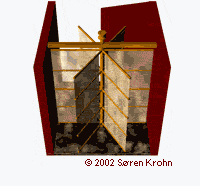
A model of a Persian windmill. Vertical-axis windmills were developed before 500 - 900 AD (some place their invention much earlier) to raise water and mill corn and were still in use in the 1970's in the Zahedan region of Iran. |
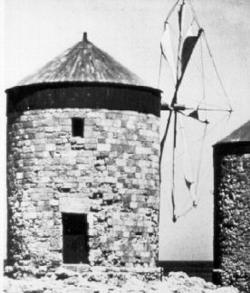
An example of early Greek windmills as they appeared around 1300 AD. Based on the Persian design, the design changed the orientation of the axis to horizontal. Most likely the idea for a horizontal axle came from watermills, which were introduced at about the same time. Like the Persian windmills, the Greek windmills could only operate in regions where the wind blew mostly from the same direction. |
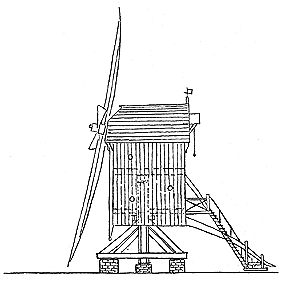
A Dutch postmill. Winds in the Netherlands change direction frequently, which required a mechanism that allowed the sails to face the wind. To turn the sails the entire postmill had to be directed into the wind. This required a very sturdy construction of the base and pole. |
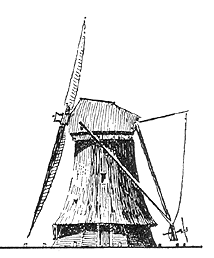
Dutch towermills improved the construction by reducing the part directed against the wind to the top of the mill only. This allowed the major part of the mill to be built in solid construction (such as brick). A lever attached to the top allowed it to be manually directed against the wind. |
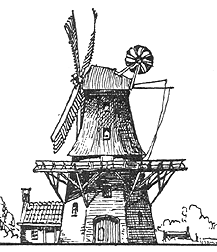
The addition of a smaller set of sails perpendicular to the main sails improved the mill further. The mill top now directed itself against the wind and followed changes in the wind direction automatically. |
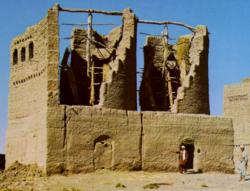
Ruins of Persian type windmills in Khorasan (a region that extends across Iran, Turkmenistan and Afghanistan). |
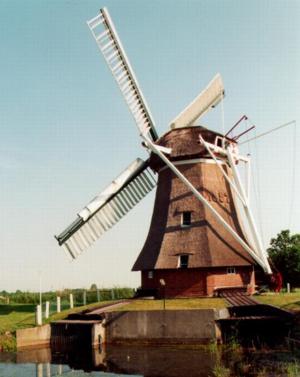
An example of a modern towermill in the Grooningen area of Holland. |